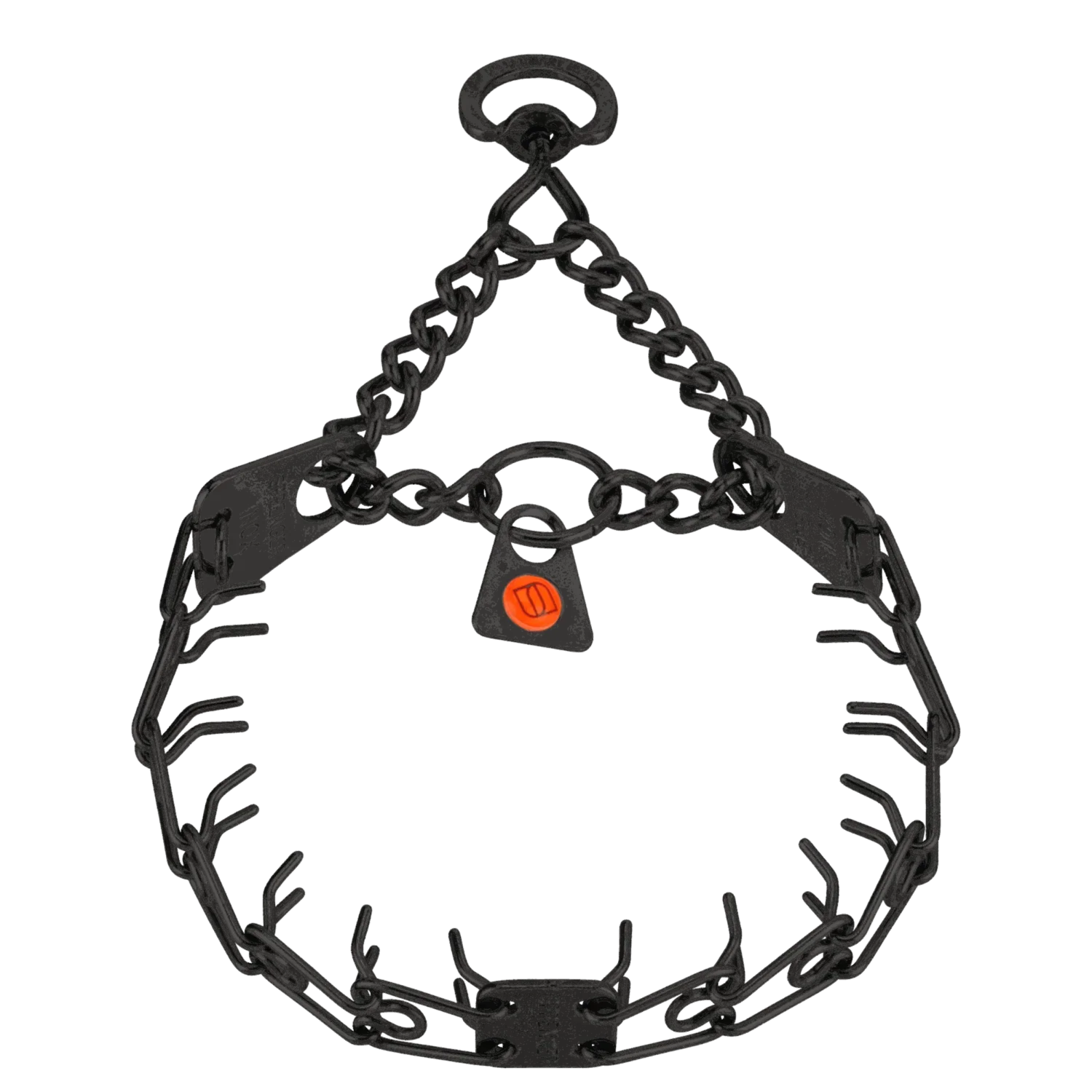Herm Sprenger MICRO Black Stainless Steel Training Collar with Swivel D ring 1.5mm 32cm (13in)



Herm Sprenger MICRO Black Stainless Steel Training Collar with Swivel D ring 1.5mm 32cm (13in)
The Herm Sprenger MICRO Black Stainless Steel Training Collar is the ultimate choice for small-breed dog owners and trainers who demand precision, safety, and reliability in every detail.
Crafted in Germany, this collar features 1.5 mm fine-gauge stainless-steel links designed specifically for dogs with smaller necks. Its sleek black stainless-steel finish offers superior durability and corrosion resistance, making it ideal for both everyday walks and structured training sessions.
The swivel D-ring prevents lead tangling and ensures smooth communication between handler and dog, allowing for consistent, even pressure release — a hallmark of Herm Sprenger’s renowned engineering.
Whether you’re refining leash manners or teaching calm engagement, the MICRO collar provides precise feedback without compromising comfort.
Key Features
Authentic Herm Sprenger Germany design and quality
Black stainless steel for maximum strength and rust resistance
1.5 mm fine links – perfect for small-breed dogs
Swivel D-ring for tangle-free control and smooth leash rotation
Lightweight yet highly durable construction
32 cm (13 in) total length – suitable for neck circumferences up to ~29 cm
Ideal For
Small breeds
Leash-training and engagement exercises
Professional trainers and handlers seeking precision equipment
Note: Always ensure the collar is correctly fitted and used under guidance from a qualified trainer. Not intended for unsupervised wear.
How to Use the Collar:
To put the collar on, open the links, place the collar around the dog's neck, and then close the links. Do not slide the collar over the dog’s head.
Disclaimer: Training aids are only as effective as the user is competent in using them. We strongly advise consulting with a trainer experienced in using prong collars. Sit Stay Play is not responsible for any harm caused by the use or misuse of these collars. The responsibility lies solely with the user.
How to: Prong Collar by Tom Davis
Regulations on Prong Collars by State
Prong collar laws vary across Australian states and territories. Here's a summary of the current regulations:
States/Territories with Bans
Three jurisdictions have banned the use of prong collars:
Victoria: Prohibited under Section 9 of the Prevention of Cruelty to Animals Regulations 2008.
Tasmania: Banned under Section 8 of the Animal Welfare Act 1993 (updated November 2022).
Queensland: Prohibited under Section 37A of the Animal Care and Protection Act 2001 (updated December 2022), unless the person has a reasonable excuse.
States/Territories without Bans
The following jurisdictions currently have no specific prohibitions on prong collars:
Australian Capital Territory (ACT)
New South Wales (NSW)
Northern Territory (NT)
South Australia (SA)
Western Australia (WA)
Care
Rinse after use (especially after walks in rain, near salt water, or muddy areas)
Regular cleaning (weekly or as needed)
Inspect regularly for wear or damage
Store properly
Avoid harsh chemicals
Proper care helps prevent corrosion (even on stainless steel), extends the life of the collar, and ensures your dog’s safety during walks and training.
Disclaimer: It is common to see wear and tear
Loose or bent prongs
Worn connection points
Quick-release mechanism fatigue (if applicable)
Surface scratches or dulling
Rare: corrosion or rust spots
Fur discolouration
Rust from a low-quality collar or non-stainless components (like rings or clips that aren't true stainless steel).
Metal dust or residue from worn parts (rare with premium stainless steel).
Environmental factors, not the collar — like iron in water (from rain, puddles, or sprinklers), mud, or soil. When wet fur contacts metal, tiny particles can create stains.
Important:
True stainless steel (e.g. Herm Sprenger stainless collars) will not cause fur staining under normal, clean conditions.
Chrome-plated collars or collars with mixed metals are more likely to cause fur discoloration because the plating can wear off, exposing cheaper metal underneath.
White or light-colored dogs (like Samoyeds or Huskies) show stains more easily if there’s any rust or residue.
